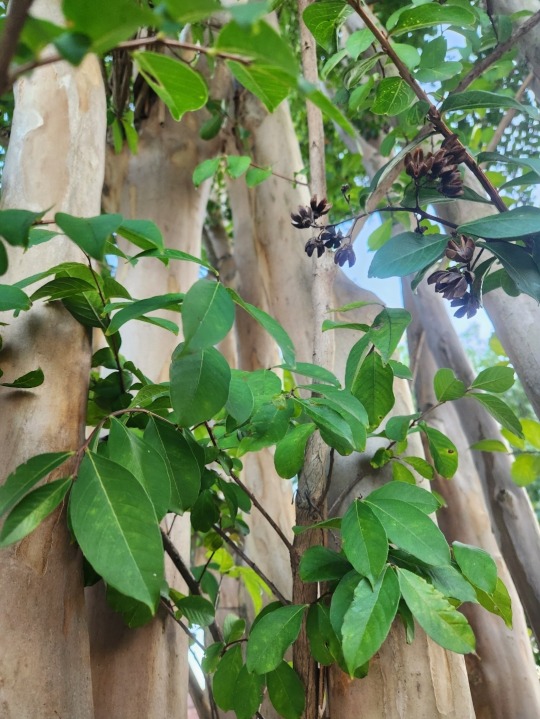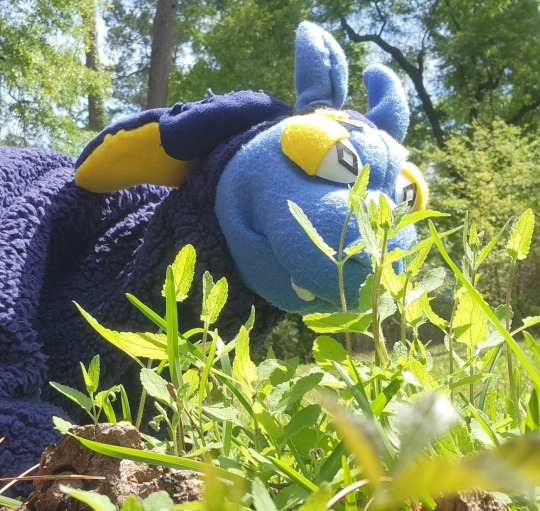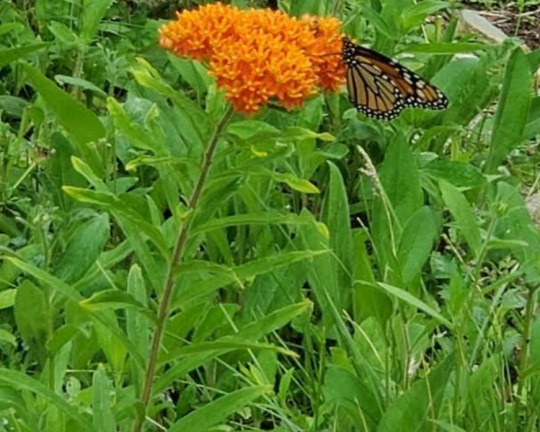#Fellowh 'fabulates
Text

Greetings, world! Fellowh here from the Curated Reserve.
After many weeks of negotiation, Scientist Simulacrumb has agreed to let us resident folk have access to their social media! They said that, as long as we are careful not to reveal private information, we can post anything about our lives here at the reserve. According to Scientist, framing it as "free advertising" is what won the higher-ups' approval.
Scientist also said that not too many of us can be on camera at the same time for safety reasons, so for now, here are a few pictures of my terrapinskin friend Chelys and I at one of the reserve's many reservoirs.
Expect to see a variety of posts from all kinds of residents! This is going to be great!
#Reserve Update#C.R. Critter Community post#Reserve post#Curated Reserve puppets#creatures#Fellowh 'fabulates
0 notes
Text







Hi, everyone, it's Fellowh! Today was the great North American solar eclipse! Scientist took all of the interested residents on a field trip up a local mountain to watch the sky.
While lunar eclipses happen when the Earth gets between the Sun and the Moon, solar eclipses occur when the moon gets in between the Earth and Sun. Turns out, a stunning solar eclipse wasn't the only sight to spot in the sky! Comet 12P/Pons-Brooks flew by just to the left of the sun during the eclipse, though we needed a telescope or binoculars to see it.
In the time the moon crossed the Sun before and after totality, we made sure to wear special eye protection.
The eclipse's totality lasted for around 3 minutes where we were, but the wind up and down of the whole experience took a couple of hours. The shadows grew longer as the sky dimmed. It got dark enough to look like late evening! There were a lot of sounds from the animals like the Canada geese being confused at the sudden darkness, and even a few of the C.R.itters started getting a little sleepy.
It was still so cold that we got to play in the mountain's snow while we waited for the eclipse to start. Chelys and other reptilians made sure to stay out of the snow so they wouldn't get sick. Overall, we had a wonderful time!
3 notes
·
View notes
Text




Hi, everyone!
Chelys has been sick in bed since the last post, and Scientist says it's because she stayed outside for too long the other day. Chelys has been super frustrated with not being able to go outside in the cold with me and the other endothermic ("warm-blooded") residents, so I thought this would help cheer her up!
Since certain animals like reptiles and fish are ectothermic ("cold-blooded"), they can't regulate their own body heat that well compared to mammals or birds. This can be great in very hot weather, where endothermic creatures like me could risk overheating. But, being an ectotherm can be a big issue during the colder season.
Different ectotherms have different ways to survive really cold winter days. Some of Chelys' distant turtle relatives have found a way to stay warm without ever leaving their habitat. River cooters and several other kinds of turtles take a long underwater nap called "brumation": the cold-blooded version of hibernation! Thanks to water's high heat specificity, the bottom of a river, pond, or even ocean will be nowhere near as cold as the surface, so animals can keep their bodies safe at the bottom during harsh weather conditions.
Even though most of us may not sleep through the winter, it's still very important to give our bodies the help they need to make it through certain kinds of weather. If that means bundling up and staying inside as much as you can during this time of year, then do it! We all have different adaptations necessary to survive different things. We can always find new ways to play that include everyone, no matter what environments our bodies were built for.
---Fellowh
2 notes
·
View notes
Text






Hi, everyone!
I was wandering around today when I noticed the strange bark on a few trees along the vehicle tour trail. Most trees I know have dark, thick bark with pretty deep cracks running through its singular trunk, but these trees had multiple trunks that were nearly pale and smooth all over. Any bark I could peel off was very thin, like paper.
I also saw how thin the branches got, some of them even bowing under the weight of their own clusters of flowers. I think one of these trees may be older than the others, though, because it stretched really tall and its branches were a lot sturdier before getting scraggly at the ends.
I wanted to ask Galen to borrow a book on plants, but they weren’t home today. I didn’t want to walk all the way to the library, so I just borrowed a book Galen was supposed to return over two years ago. They won’t even know it’s gone.
The trees are in the genus Lagerstroemia, and are commonly called “crepe-myrtles” or “crape myrtles”. Technically, they are classified as shrubs. Their rounded crown of trunks make a pretty cozy sitting space if you can fit inside, which explains why some birds use them as habitats. I think I just found the perfect spot for the next game of Hide-and-Go-Seek!
Fun fact: these trees aren’t native to North America. They’re actually from eastern Asia, but are very commonly used as ornamental plants in hot, sunny places in North America. Apparently, a way to increase the number of flowers and branches in time for the summer bloom is to pinch new growth in the Spring. The ones we have on the reserve are either pink or red, but other trees’ colors can be lavender, white, and purple.
Turns out, the fruit from these flowers are dark maroon buds that appear in the dead of winter. Humans can’t eat them, but lots of birds can. Even though they aren’t native, they’ve become a huge staple in the diets of native birds like finches, cardinals, juncos, and sparrows. The American goldfinches, in particular, have been observed to really like the seeds the most.
That’s really cool! Maybe, in a few months, I’ll set up my own observations. I wonder which birds I could see eating the seeds!
But first, I should decide if I want to bring this book back to the proper library or to Galen's stash.
---Fellowh
0 notes
Text



Hi, everyone. I think I messed up.
Chelys and I tried to make our way to the edge of the reserve today. There’s this old road that runs along an overgrown border of the reserve. It gets really busy this time of year, with lots of human cars racing up and down it. Chelys has been dying to go see it so she can throw walnuts and rocks onto the road to watch cars run over them. She begged me to go with her last week, but I was so interested in watching roly-polies all day that I forgot.
Today was the last chance to achieve peak summer car-crushings, so we had to hurry. On the way, I saw a patch of lavender a little off the path. I promised Chelys that I’d only take a minute to check the field out. But then I saw all these bumble bees buzzing around, and I HAD to know why there were so many hovering there.
I knew that bees always prefer anything that blooms because it’s a source for pollen and nectar. They're willing to travel up to over 6 miles from their hives just to get both. Bees like the Bombus pensylvanicus (bumble bee) eat pollen for nutrients and protein, though they primarily feed it to their larvae. Similarly, raw nectar is used for energy and to be made into honey in the hives. Lavandula Angustifolia (lavender) comes in many types, and with most blooming nonstop or multiple times a year, it makes sense for various bees to like it so much.
I was having a great time observing, but looking back, Chelys wasn’t. She crouched in the field with me at first, but soon she started jumping off of rocks and singing loudly. I was worried that she might scare away the bees, so I hissed at her to stop. She snapped back that we were supposed to be somewhere else. I promised we could leave soon, but I didn’t really mean it. I thought Chelys wouldn't mind---while it's a close race, bees are still more interesting than exploding walnuts!
At some point, Chelys frustratedly screamed she would go to the reserve's edge by herself. She turned to run, so I grabbed her tail. Then she just bit me!
I bit her back, and we ended up wrestling out of the lavender patch and all the way to the border. The rumblings of passing cars eventually untangled us. Chelys gasped and wasted no time in clambering up a tree to throw things over the hidden fence and onto the road.
Watching her gawk and cheer at the flying debris was honestly a lot of fun in its own right. As I climbed onto a lower branch, I remembered how much she cared about going this year. I was wrong to hold her up. Just because I may not enjoy it as much doesn’t mean that it’s not as important to the other person.
I’ll apologize to her once she comes back down.
---Fellowh
1 note
·
View note
Text


Hiya! Some days, it gets so HOT out that you just don't feel like leaving your home. I know I haven't been outside my den in a while. But I needed to borrow acorn flour from Elder Dylomor today, so I bucked up the courage and walked through the elder's temporary cave. During one of my rests in the shade, I spotted something pretty neat!
That orange flower is called Asclepius tuberosa or the Butterfly Milkweed. Milkweed is a crucial wildflower in its native ecosystems of most of the North American land east of the Rocky Mountains. Its scientific name comes from the human Ancient Greek god of medicine and healing, Asklepios. This is because the roots were used for wound care, throat and lung trouble, and even to induce vomiting by numerous Indigenous North American nations.
Lots of insects rely on the plant, too! Two of the the butterflies that commonly flock to the Butterfly Milkweed are the Monarch and the Tiger Milkweed. Monarch butterfly larvae only eat milkweed leaves, and thus the plant is huge factor of their life cycle. Other bugs like the milkweed beetle(blue, red, common, and large), bees, and even hummingbirds rely on the plant for food. It's a key component of native wildflower patches that should not be excluded, especially in those grown in people's home gardens.
I was really dreading going outside today. The weather promised to be unbearable, but today was the last day I could pick up the acorn flour before Elder Dylomor left my side of the reserve. Even though the things I had to do today were uncomfortable, I still found something small to enjoy as I endured.
--Fellowh
0 notes
Text

Happy new year! May whatever 2024 brings to your metaphorical ecosystem be as varied and integral as native beach grass.
Whether its Ammophila breviligulata (American beach grass) or Ammophila arenaria (European beach grass), both kinds have interconnecting roots that help sand dunes keep their shape along the eastern North American, northern African, western Asian, and temperate European coastlines. Stable dunes prevent coastal erosion by mitigating the amount of sand that is taken by the sea. Sand dunes also act as barriers against coastal flooding and storms, and provide resources for a wide range of wildlife, from small mammals to migrating birds.
And without native beach grass, sand dunes would be a lot less effective at protecting beaches across the world.
We visited a beach recently and observing the ecosystem reminded me that everyone needs a safety net to hold them together. Having a trusted community or resource to fall back on in times of need will help everyone be happy and healthy. May everyone find their version of beach grass this year!
---Fellowh
0 notes
Text



I saw this Turkey Vulture gliding in circles not too far from the grove! I thought following it would lead me to some cool decorations for the Reserve Community Winter Solstice celebration. Turns out, Carthartes aura can circle on thermal vents for a long time--up to 6 hours, in fact! I got bored after the 3rd hour and went to the lake, where I'll probably have better luck. Besides, I didn't want to risk getting vomited on.
---Fellowh
0 notes
Text



Spotted this beetle on our way to the grove. I was gonna get a closer look to see if it's a Green June or Figeater, but someone got to it before I could.
---Fellowh
1 note
·
View note
Text


I wanted to try my paw at sitting by the riverbank, but it took hours to get the pose right. I'm currently hiding in one of the reserve's guest bathrooms, deeply regretting my choices for the day.
---Fellowh
1 note
·
View note